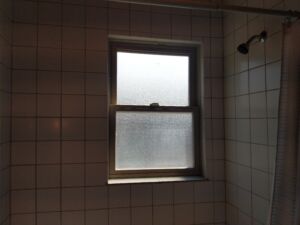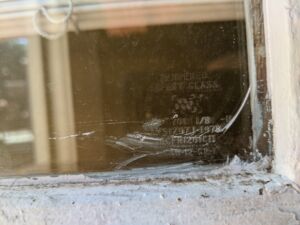

The next step is to locate all areas within your home that should have safety glass installed. Modern building standards require safety glass to be installed in the following locations:
-Glass in swinging, bi-fold, or sliding doors
- Exception: Decorative glazing with less than 3 inches measured at the shortest dimensional side.
-Glass installed adjacent to doors where glass is less than 24 inches from the outer edges of the swinging (hinge) side of the door and any part of glass that is less than 60 inches above a walking surface.
- Exceptions: glass located on non-swinging side of door, decorative glass, where separated by an intervening barrier, in places where the door accesses a closet or alcove that is less than 3 feet deep, or the glass is adjacent to a fixed door.
-Windows that meet all 4 of the following conditions: Bottom edge is less than 18 inches above floor and top edge is greater than 36 inches above floor, window glazing is greater than 9 square feet and less than 36 inches from walking surface.
- Exceptions: Decorative glass and glass that is protected with a railing on side with walking surface.
– All glass in guards or within railings.
-Glass within areas of bathing or other water related activities where the lower edge of glass is less than 60 inches above the adjacent walking surface.
- Exceptions: Glass that is located a distance greater than 60 inches horizontally in a straight line from the water’s edge.
Glass that is less than 3 feet above the walking surface of stairs, landings, or ramps.
- Exceptions: If glass is protected by an intervening guardrail that is 34-38 inches in height and capable of withstanding a minimum of 50 pounds per linear feet load.
Where the glass is greater than 36 inches horizontally from walking surface.
Glass that is less than 60 inches horizontally from the bottom of a stair landing measured in a 180-degree arc from the lowest tread and is less than 36 inches above the adjacent landing.
- Exceptions: Glass that is protected by an intervening guardrail system that is a minimum distance of 18 inches from this glass.
Once these areas have been properly evaluated, and if safety glass markings are not identified, we recommend contacting a qualified window contractor to discuss options for replacement of these unprotected glass features. As previously stated, the home may pre-date these safety requirements, but it is in the best interest of the occupants and guests of the home to have modern safety measures in place to help mitigate potential safety hazards and personal injury.
